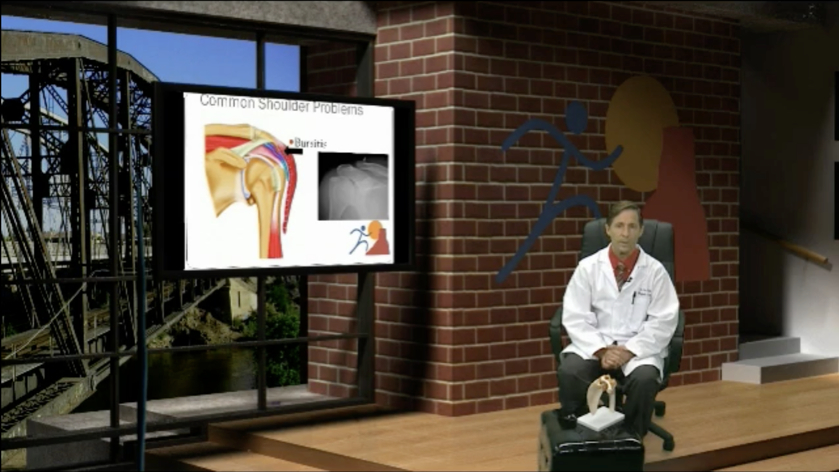Diagnosing and Treating Shoulder Bursitis
November 30, 2022
Hello and welcome to Yuma Health and Happenings. I’m Dr. Ron Clark, Orthopedic Surgeon and founder of The Bone and Joint Center of Yuma. Today I want to talk about shoulder bursitis and the potential treatments for it.
The Parts of the Shoulder
The shoulder is comprised of three separate bones, the arm bone, the shoulder blade bone, and the collar bone. The shoulder is connected to the rest of the body by the inner end of the collar bone and supported by muscles that connect to the neck and upper back. The shoulder blade is completely covered by muscles and lies on the back of the rib cage. The major joint of the shoulder is where the arm bone and the shoulder blade meet. The end of the collar bone also connects with the shoulder blade at a different location and is a flexible joint.
The fact that the shoulder blade glides over the rib cage makes a third joint and increases the movement range of our arms. The surface covering the arm bone and shoulder blade socket is called joint cartilage and is 70% water. This surface allows the two ends of the bone to move smoothly over each other.
Because the upper end of the arm bone is round and the shoulder blade forms a shallow cup, it is considered a ball and socket joint. This explains how we can use our shoulders to move our arms around our head and how this is the joint of the body with the greatest movement.
Since the socket side of the joint is much smaller than the arm bone is, a great deal of force and energy can be passed through the muscles and tissues that hold the shoulder together. Many of the common shoulder problems occur around the muscles and the tissues that are supposed to hold the shoulder bones together.
What is Shoulder Bursitis?
The most common shoulder problem occurs due to friction between the shoulder blade muscles and their protective covering called the bursa. When the friction causes inflammation, the area becomes painful, and people cannot lift their hands above shoulder level.
This problem is called bursitis and is closely associated with repetitive activities that cause the problem to result after years of use. The pain of bursitis can be quite substantial, and many people go to the hospital each year with a rapid onset of shoulder pain that turns out to be bursitis.
By working with a team that specializes in this condition, you can easily diagnose the cause and begin treatment.
Making a Diagnosis
To know that shoulder pain is coming from the bursa it is important to know that it’s not coming from other parts of the shoulder joint. X-rays are helpful for seeing what kind of condition the bones of the shoulder are in and if there is extra wear around the joint surfaces. Extra wear might mean that the pain could be from arthritis instead.
When the x-rays are normal, that does not mean that the shoulder pain is bursitis. There are other problems that do not show up on x-rays that are responsible for causing shoulder pain. Doing a strength assessment with the individual is an important way of checking for muscle or tendon damage that could cause shoulder pain.
Those who have damaged muscles or tendons will almost always show weakness on their examination in the office. Individuals who only have bursitis will often only have weakness caused by pain.
To make an appropriate treatment recommendation for a painful shoulder, it is very important to understand the problem. Many times, x-rays will be taken to assess the condition of the joint surfaces, but this technology cannot assess the muscles and joint tissues around the joint.
An MRI gives us the most information about a painful shoulder and has greatly improved the accuracy with which persons are treated. Treatments for shoulder problems vary due to a lack of ability to know exactly which tissues are affected.
Treatments for Shoulder Bursitis
The easiest treatment involves using pills like ibuprofen or its cousin, Aleve. These medicines have gained approval for use without a prescription but still should be used carefully due to side effects like stomach irritation.
When pills are not effective then injection of cortisone-like medications can be used to eliminate or reduce pain. Physical therapy can be helpful for some conditions but may not help problems that require surgical treatment.
The most important treatment for shoulder bursitis is to rest the shoulder or decrease the amount of friction that it sees each day. This treatment is sometimes the hardest to get done. Cold or heat application can also help relieve pain and inflammation around the shoulder.
For most people, shoulder bursitis can occur at any time so one should be on the lookout for the earliest signs. Shoulder bursitis is more easily treated early rather than later.
When you see signs of bursitis, it’s best to work with a physician quickly. Contact The Bone and Joint Center of Yuma and set up an appointment with our team. Our experts have decades of experience treating bursitis and similar conditions.